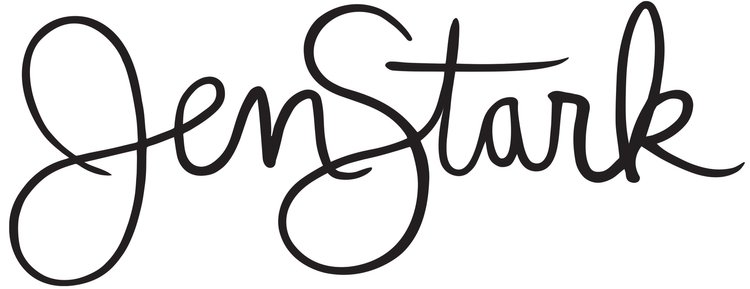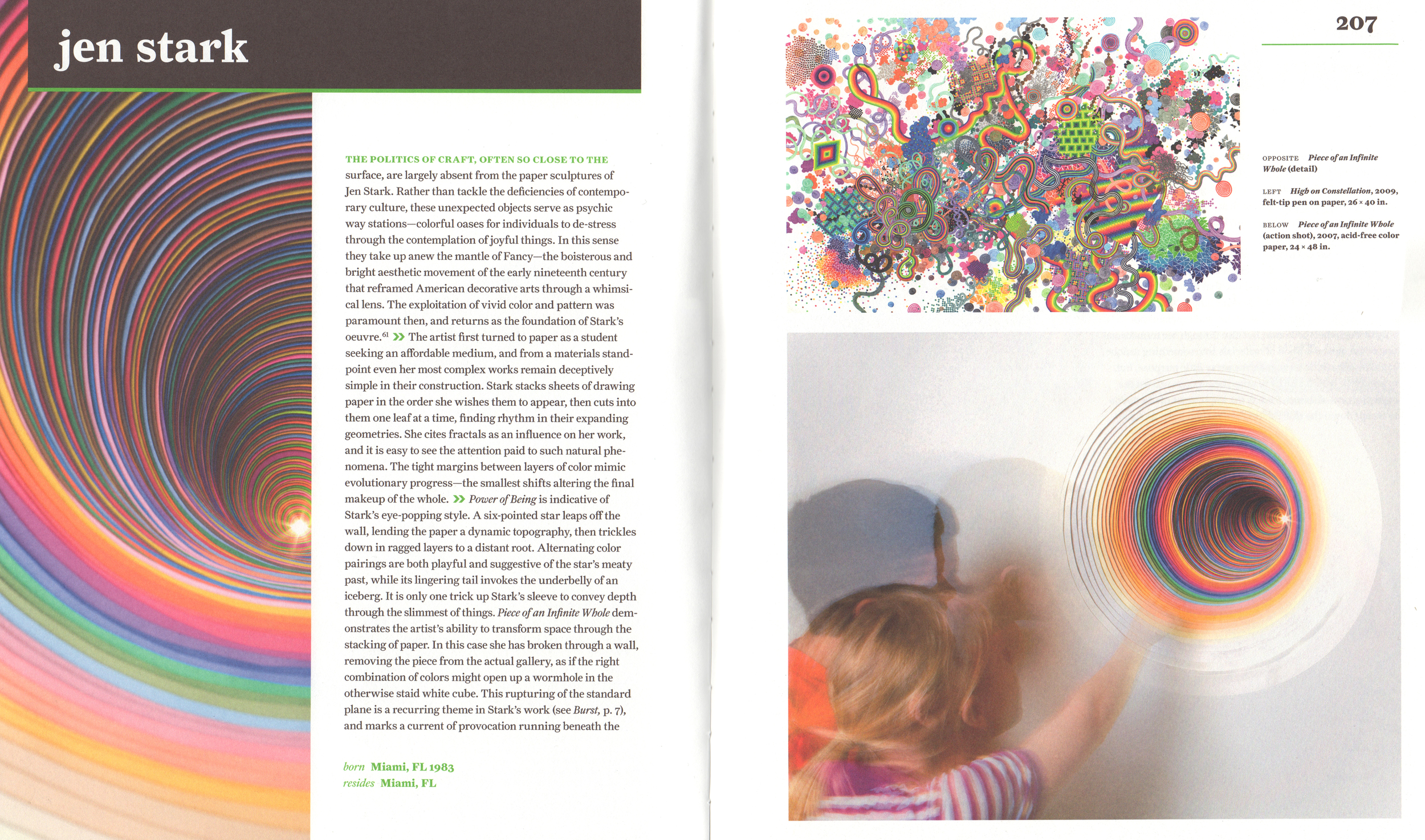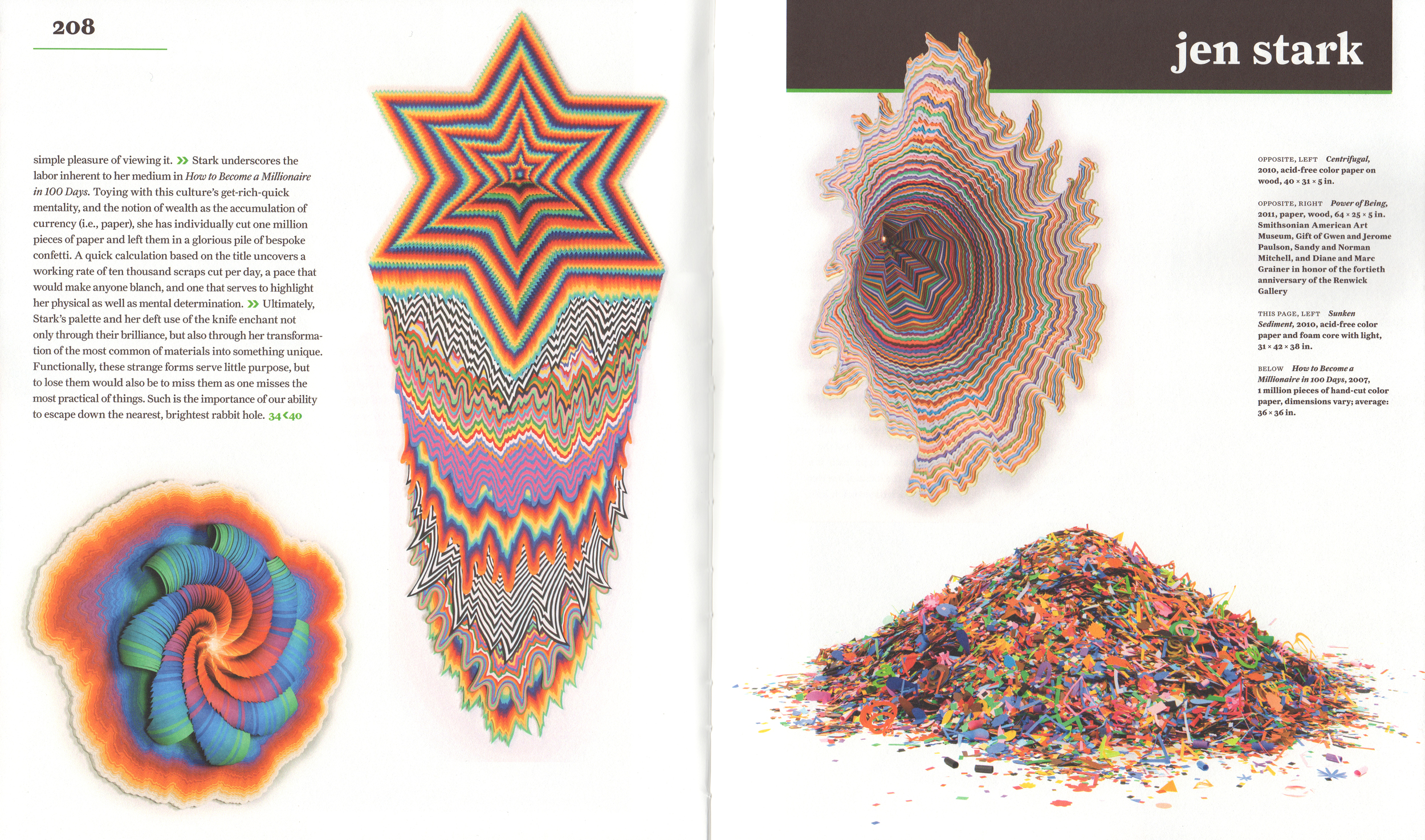The Smithsonian American Art Museum's Renwick Gallery came out with a book of their current show that my work is included in "40 Under 40: Craft Futures". Here is the article and photos of the book. If you'd like a copy for yourself, the book is also available to purchase HERE.
"40 UNDER 40" group exhibition book Written by: Nicholas R. Bell
The politics of craft, often so close to the surface, are largely absent from the paper sculptures of Jen Stark. Rather than tackle the deficiencies of contemporary culture, these unexpected objects serve as psychic way stations--colorful oases for individuals to de-stress through the contemplation of joyful things. In this sense they take up anew the mantle of Fancy--boisterous and bright aesthetic movement of the early nineteenth century that reframed American decorative arts through a whimsical lens. The exploitation of vivid color and pattern was paramount then, and returns as the foundation of Stark's oeuvre.
The artist first turned to paper as a student seeking an affordable medium, and from a materials standpoint even her most complex works remain deceptively simple in their construction. Start stacks sheets of drawing paper in the order she wishes them to appear, then cuts into them one leaf at a time, finding rhythm in their expanding geometries. She cites fractals as an influence on her work, and it is easy to see the attention paid to such natural phenomena. The tight margins between layers of color mimic evolutionary progress--the smallest shifts altering the final makeup the whole.
Power of Being is indicative of Stark's eye-popping style. A six-pointed star leaps off the wall, lending the paper a dynamic topography, then trickles down in ragged layers to a distant root. Alternating color pairings are both playful and suggestive of the star's meaty past, while its lingering tail invokes the underbelly of an iceberg. It is only one trick up Stark's sleeve to convey depth through the slimmest of things. Piece of an Infinite Whole demonstrates the artist's ability to transform space through the stacking of paper. In this case she has broken through a wall, removing the piece from the actual gallery, as if the right combination of colors might open up a wormhole in otherwise staid white cube. This rupturing of the standard plane is a recurring theme in Stark's work, and marks a current of provocation running beneath the simple pleasure of viewing it.
Stark underscores the labor inherent to her medium in How to Become a Millionaire in 100 Days. Toying with this culture's get-rich-quick mentality, and the notion of wealth as the accumulation of currency (i.e., paper), she has individually cut one million pieces of paper and left them in a glorious pile of bespoke confetti. A quick calculation based on the title uncovers a working rate of ten thousand scraps cut per day, a pace that would make anyone blanch, and one that serves to highlight her physical as well as mental determination.
Ultimately, Stark's palette and her deft use of the knife enchant not only through their brilliance, but also through her transformation of the most common of materials into something unique. Functionally, these strange forms serve little purpose, but to lose them would also be to miss them as one misses the most practical of things. Such is the importance of our ability to escape down the nearest, brightest rabbit hole.



